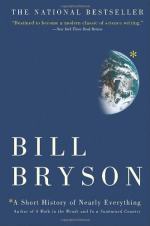
|
| Name: _________________________ | Period: ___________________ |
This test consists of 5 multiple choice questions, 5 short answer questions, and 10 short essay questions.
Multiple Choice Questions
1. What is the highest elevation that humans are able to live and survive on Earth continuously without special accommodations?
(a) 22,000 feet.
(b) 14,000 feet.
(c) 18,000 feet.
(d) 27,000 feet.
2. Which of the following is not a DNA component?
(a) Uracil.
(b) Cytosine.
(c) Adenine.
(d) Guanine.
3. What did Carl Linnaeus bring order to through his method of classification?
(a) The plant world.
(b) Naming features of the moon.
(c) Naming bodies of water.
(d) The bacterial world.
4. Scientist Johann Friedrich Miescher is known for:
(a) Discovering mutant bacteria in undersea rocks.
(b) Discovering DNA.
(c) Decoding complex strands of DNA.
(d) Cloning the first sheep.
5. The troposphere is the layer of atmosphere:
(a) Closest to the ground.
(b) That is coldest.
(c) Farthest away.
(d) Just above the highest clouds.
Short Answer Questions
1. Before Charles Darwin wrote his famous book about natural selection, he spent eight years writing about what?
2. The dodo was a:
3. What organisms does the author say are the most enduring inhabitants of our planet?
4. Bacteria take nitrogen from the air and form it into what?
5. What book did paleontologist Stephen Jay Gould write?
Short Essay Questions
1. What are bipeds? What are some of the unique challenges they face because of their structure?
2. What is a hominid? Describe some of the hominids that existed in the past.
3. How does DNA replicate itself?
4. Describe the Indonesian volcanic eruption of 1815.
5. How are scientific discoveries challenging the understanding of human evolution?
6. What does a Swedish DNA study reveal about the origins of modern man?
7. What does the author say about radioactive waste being dumped into oceans?
8. What type of scientific work did the monk and scientist Gregor Mendel do?
9. Why does Bryson say that fossils represent only a tiny fraction of life on Earth?
10. Describe the layer of atmosphere called the troposphere.
|
This section contains 772 words (approx. 3 pages at 300 words per page) |

|




